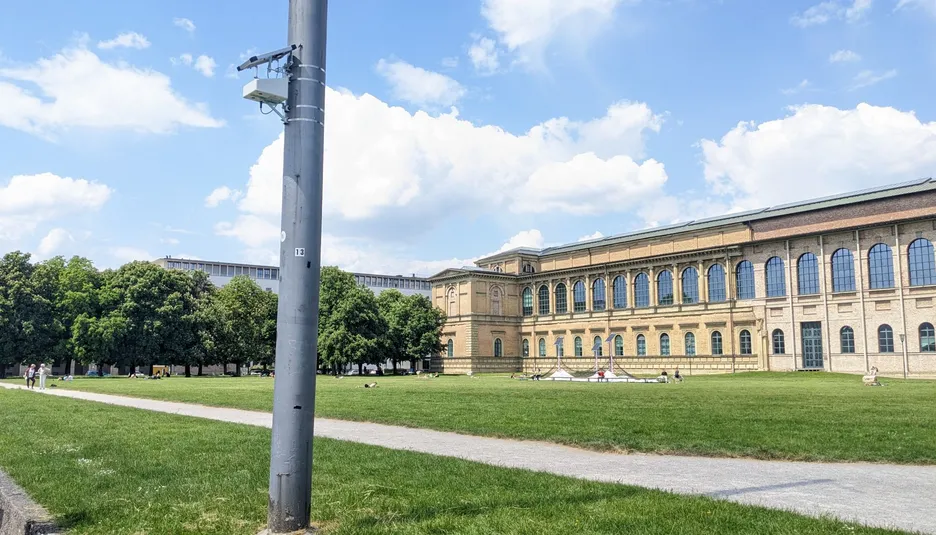Dense Air Quality Sensor Network in Munich
With the help of 30 self-developed sensor systems, the spatial distribution of air pollutants such as NOx, O3 and PM is monitored in the inner city of Munich.

Funded by the Bavarian State Ministry of the Environment and Consumer Protection, we have set up a densely populated sensor network to measure air pollutants in Munich (Project TLK 01U-75487: Engmaschiges NO2-Sensornetzwerk in München).
Our group has developed a compact and stand-alone sensor system that is automatically measuring nitrogen dioxide (NO2), nitrogen monoxide (NO), carbon monoxide (CO), ozone (O3) and particulate matter (PM) using electrochemical cells (for all gases) and optical particle counter (for PM). All systems are connected to the internet (Internet of Things, IoT) to send their data in real-time to our server. We then analyze these data and can automatically create a real-time air quality map of the study area (around Maxvorstadt) with a high spatial and temporal resolution.
In order to ensure high data quality, the sensor are calibrated using highly accurate reference instruments that are also used in governmental air quality monitoring stations, combined with novel machine learning algorithms.
This monitoring approach will help us to understand the complex metabolism of urban air pollutants.
